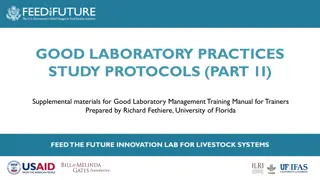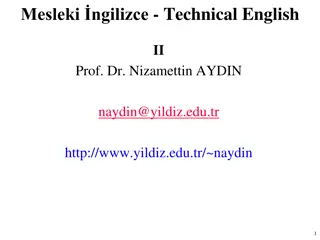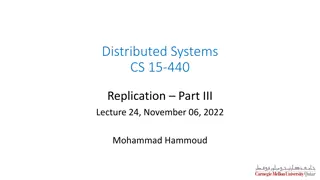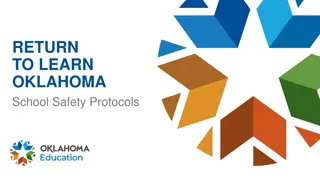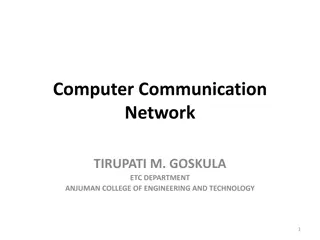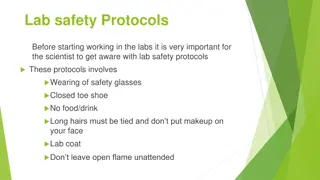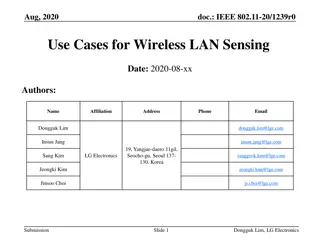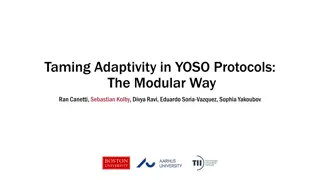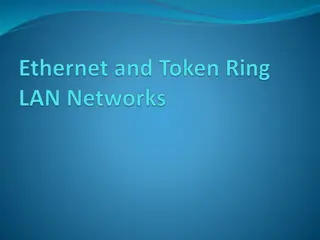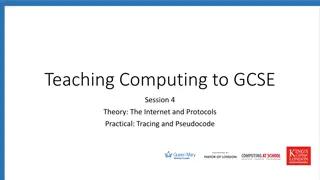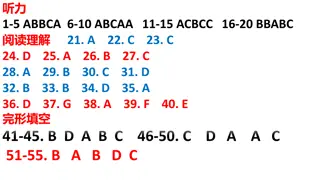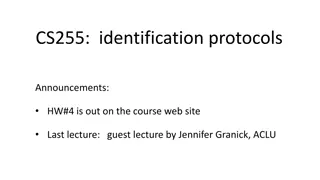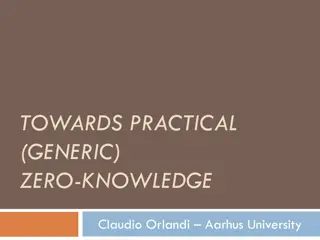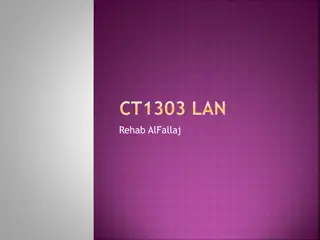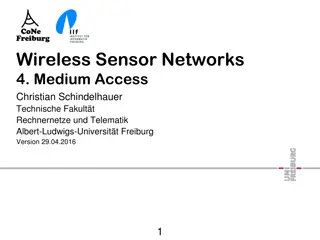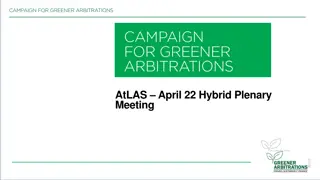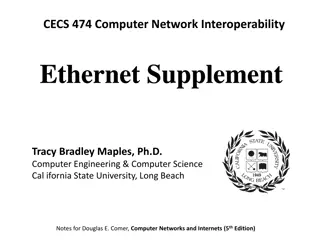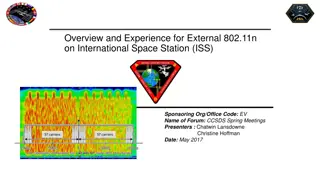LAN Protocols
Key concepts of Logical Link Control (LLC), Media Access Control (MAC), multiplexing techniques, channel access strategies, and dynamic channel allocation in local area networks (LANs). Learn about the underlying assumptions and the challenges in managing communication channels effectively.
Download Presentation

Please find below an Image/Link to download the presentation.
The content on the website is provided AS IS for your information and personal use only. It may not be sold, licensed, or shared on other websites without obtaining consent from the author.If you encounter any issues during the download, it is possible that the publisher has removed the file from their server.
You are allowed to download the files provided on this website for personal or commercial use, subject to the condition that they are used lawfully. All files are the property of their respective owners.
The content on the website is provided AS IS for your information and personal use only. It may not be sold, licensed, or shared on other websites without obtaining consent from the author.
E N D
Presentation Transcript
Dr. John P. Abraham Professor University of Texas, RGV
LLC Logical Link Control Refers upward to higher layers MAC Media Access Control refers downward to lower layers Media Access Determine how to get access when there is competition for the media. MAC (Medium Access Control) sub-layer takes care of this problem MAC is important in LANs where broadcast channels are used MAC is the lower part of the data link layer (next to physical layer) Mac sub-layer does not guarantee delivery
See the textbook for diagram p.242 1. Modified Form of Multiplexing Technique 2. Distributed Allgorithm for Controlled Access 3. Random Access Strategy
Works well for situations where set of communicating entities known in advance and does not change (not good for cell phones) Traditional way to allow more than one person to use the medium is to use FDM In Frequency division multiplexing, the total band width is divided among the total number of users FDM works well when there is a small number of users When users grow a fast busy signal is issued
underlying assumptions of dynamic channel allocation 1. Station Model 2. Single Channel Assumption 3. Collision Assumption 4. Continuous time 5. Slotted time
Consists of N independent STATIONS Each has programs that produce frames for transmission Frames are generated at intervals Once a frame is generated the station is locked until the frame is transmitted
Only one channel is available for all communication All stations transmit on it and all stations receive on that channel
If two frames are transmitted simultaneously, they overlap in time and resulting signal is garbled. All stations can detect collisions. A collided frame must be retransmitted.
Frame transmission can start any time There is no master clock controlling transmission (as opposed to slotted time discussed next)
Time is divided into discrete intervals (slots) Frame transmission begins at the start of a time slot
FDMA TDMA CDMA Already discussed
Polling Using a centralized controller Round Robin or Priority Order Reservation as used in satellite system Token Passing-> See next slides.
Each station knows the address of the station to its left and right The highest numbered station may send the first frame Then it passes permission to its immediate neighbor by sending a special frame called a token. The first station passes the token to the highest numbered one.
Physical Ring Token circulates
ALOHA PURE ALOHA SLOTTED ALOHA CARRIER SENSE MULTIPLE ACCESS PROTOCOLS (CSMA) Persistent and Nonpersistent CSMA CSMA with collision detection Collision-Free Protocols others
1970 - Norman Abramson University of Hawaii Used ground based radio broadcasting. there are two frequencies: one for inbound and another for outbound. Two versions of Aloha Pure Slotted
Users may send on the inbound frequency whenever they have data to send The central transmitter repeats it in on the outbound frequency for all stations to hear If collisions occur, collided data will be destroyed Sender can determine if the data was destroyed by listening to the channel (the sender can hear too). If data was destroyed, re-send after waiting random amount of time
Divide time into discrete slots, each time slot is enough for one frame Users agree on slot boundaries A special station emits a signal at the start of each time slot to synchronize
Standard for Ethernet known as DIX (Digital, Intel, Xerox 1978) Originally described by Xerox PARC researchers in 1973 Listen for a transmission If the line is clear then transmit Implementations: Persistent, Non Persistent and p-persistent CSMA with collision detection
Listen, if busy wait until line is free Transmit a frame If collision occurred, wait for a random amount of time Transmission time delay between two sending computers will cause the second computer not to hear the transmission.
Listen, if busy wait random amount of time and listen again until the line is free This approach is less greedy than the Persistent one This prevents two or more wanting to get on the line from doing so at the same time when the channel becomes free.
Slotted channels. Listen, if free send at the beginning of the next slot
Abort transmission as soon as collision is detected Collision is detected by comparing received signal power to sent signal If collision is detected, stop transmission and wait for random amount of time CSMA/CD is used widely in LAN IEEE 802.3 is an example.
Bit-map protocol A bit map with enough slots for all stations is passed around Each station wanting to send a frame and if the frame is ready in the que, inserts a 1 bit into its reserved slot in the bit map. Once station numbers of all who want to send is known they take turns in order. Binary countdown
Each station is given a binary address If a station wants to transmit a frame it broadcasts its address one bit at a time starting with the high order bit. Bits from each station are Ored together the station address starting with the resulting 0 or 1 bit is allowed to go on. If two or more has the same bit then go to the next bit and so on.
Collision Avoidance instead of detection For Wireless to avoid hidden stations ----A------B------C All can transmit but A may not detect Cs transmission, so if A and C transmit at the same time, there would be collision. Solution: C says read to send. B says clear to send, which is heard by A and therefore backs off from transmitting. C now can send.
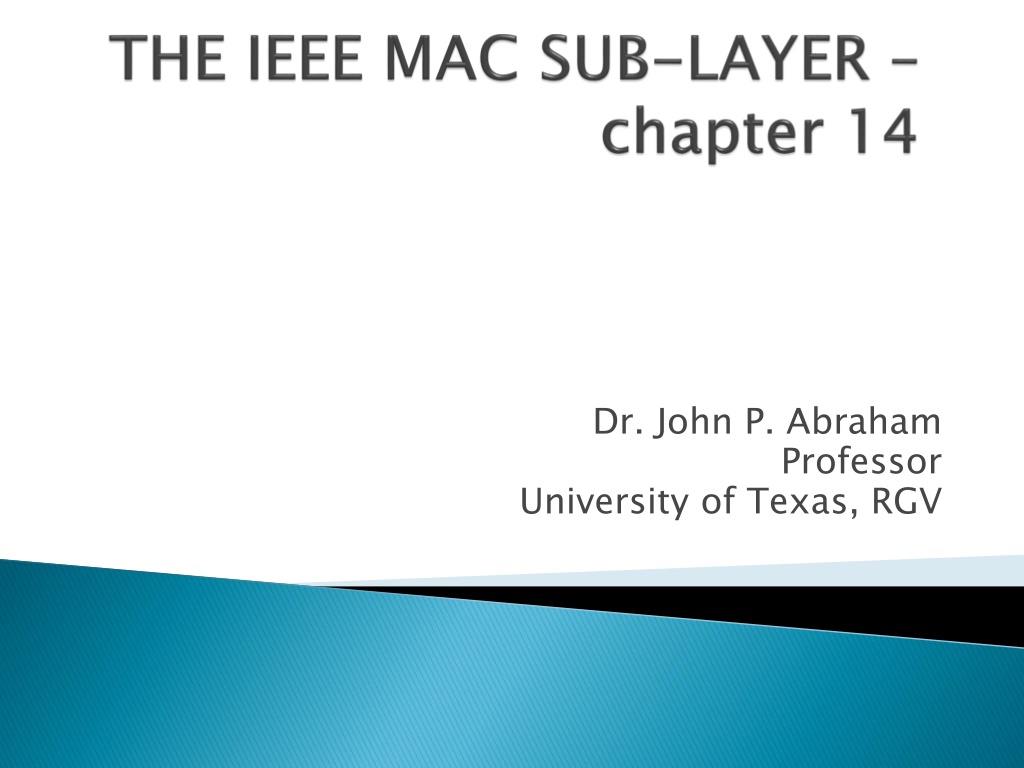
 undefined
undefined








